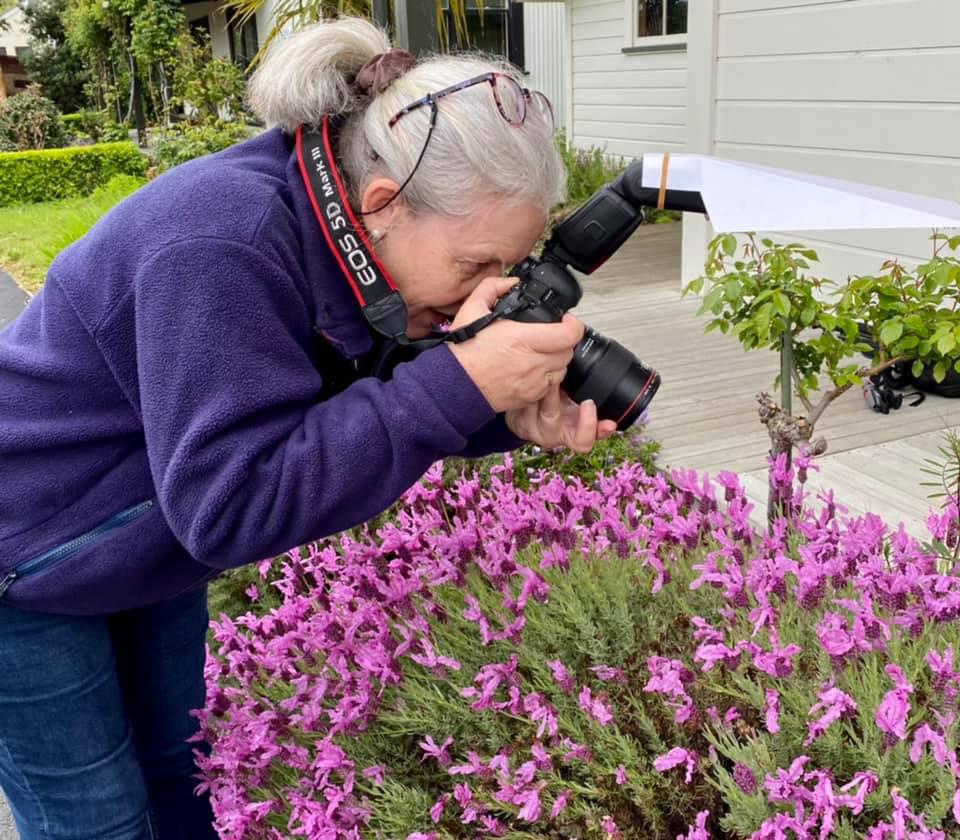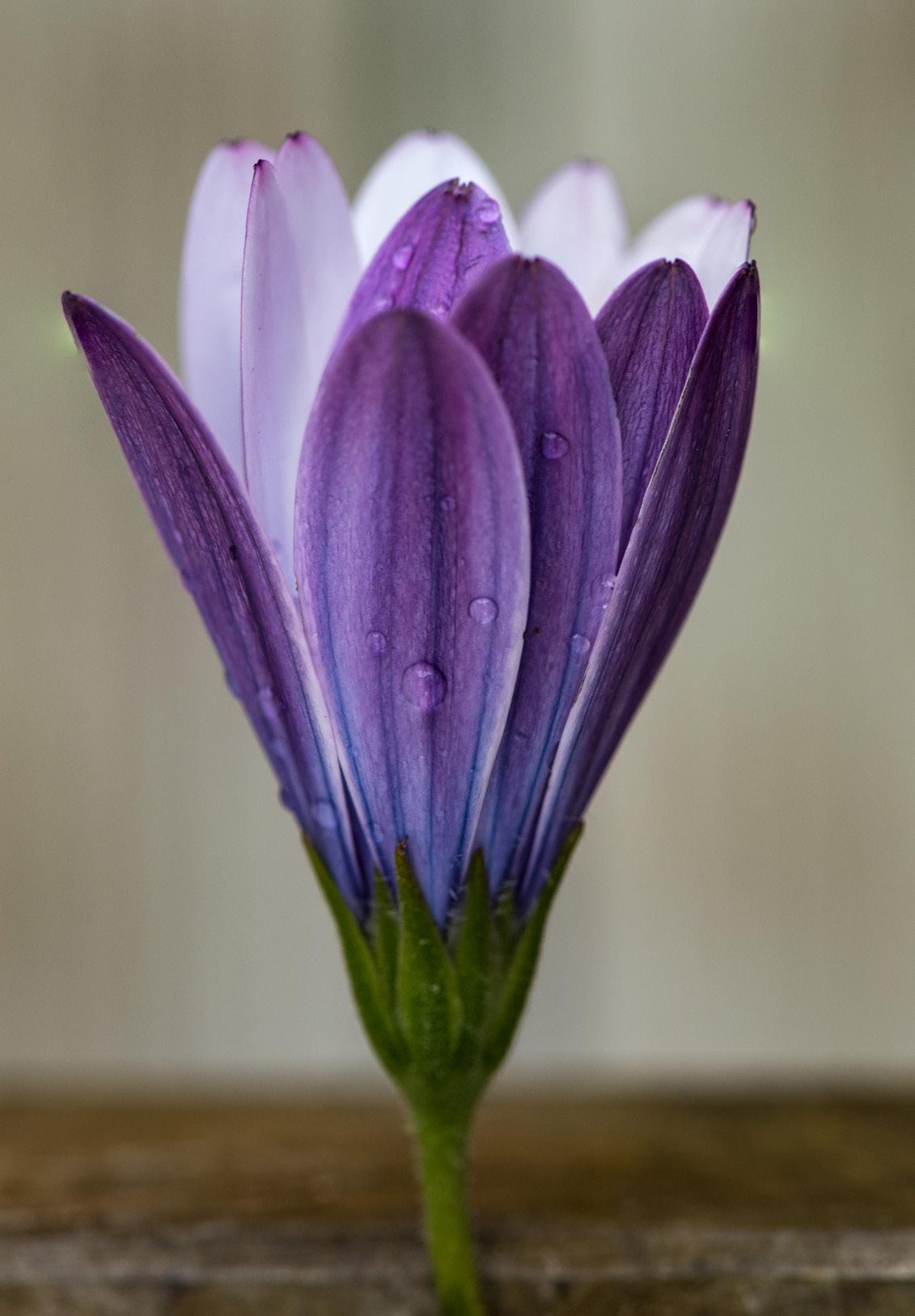
16 minute read
PSNZ Workshops Reviews
LIKE EVERYTHING ELSE COVID-19 played havoc with the 2020 PSNZ Workshop series. Fortunately once restrictions were lifted we managed to get all of the events off the ground. Over the next 12 pages the PSNZ Council members who were assigned to each session report on what happened at them.
Aaron Key – A Portrait Workshop
By Colin Kropach, Councillor for Events
A WARM SATURDAY in early November saw twelve PSNZ members meet at the Dancewell Studios in Hamilton to attend a portrait workshop. It was run by Aaron Key, an Auckland-based fashion and portraiture photographer who also happens to work for SONY as a Digital Imaging Product Specialist.
The participants were treated to a master class in portrait photography and portrait lighting. Aaron had arranged for six lighting setups in the dance studio, three in the morning and three in the afternoon, and had brought an extensive set of lighting equipment (thanks, SONY) and backdrops for each of the sets. He had also arranged for four models, Rose, Lisa, Alannah and Hans, to pose for the PSNZ members.
Aaron ran through the various lighting setups at each station and took a few shots of the models at each to demonstrate how changes in lighting can impact the end result. He had brought a wide range of strobe lights and modifiers and taught everyone how to use soft boxes, umbrellas, beauty dishes, flats and backdrops to produce stunning portrait images. The photographers were split into three groups of four and were assigned to one of the three sets. Each group was then split into two, with one shooting portraits and the other acting as the assistant. Each group had 40 minutes with each model, and individual photographers had 10 minutes shooting at each of the sets, posing the models and setting up the lighting, This setup ensured that everyone could get the shots they wanted.
The morning session consisted of three sets with Rose, Lisa and Hans (dressed as a cowboy, complete with rope, gun and stubble!) as models. In the afternoon Alannah joined us while Hans had a shave and changed into a dinner suit for James Bond, Secret Agent poses.
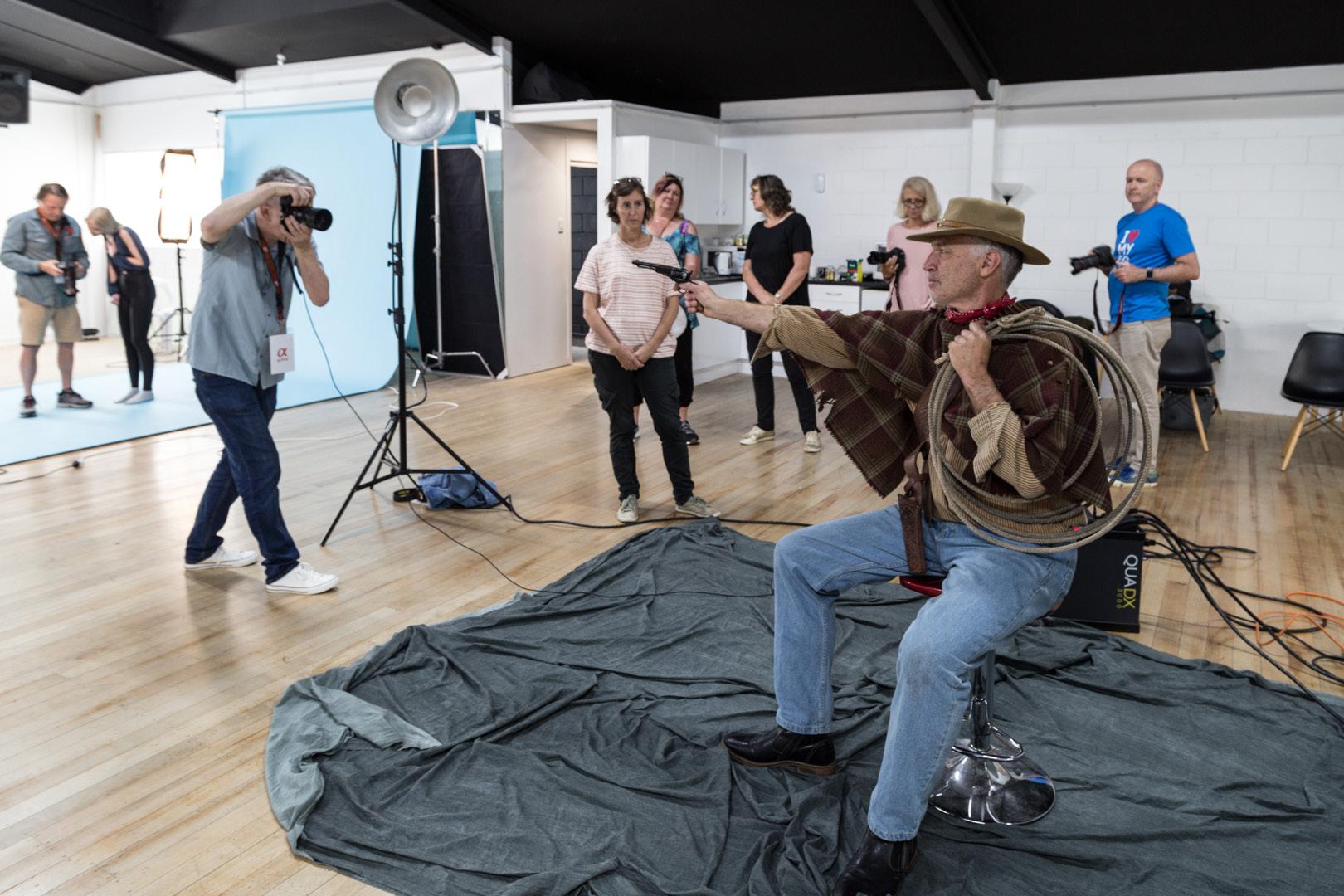
During the morning a street fayre was running outside the dance studio which provided a street photography opportunity for people who were waiting for their turn to shoot the models.
While I did not shoot any of the models, my key takeaways were
working with your models to see what look they are after
how to pose the models
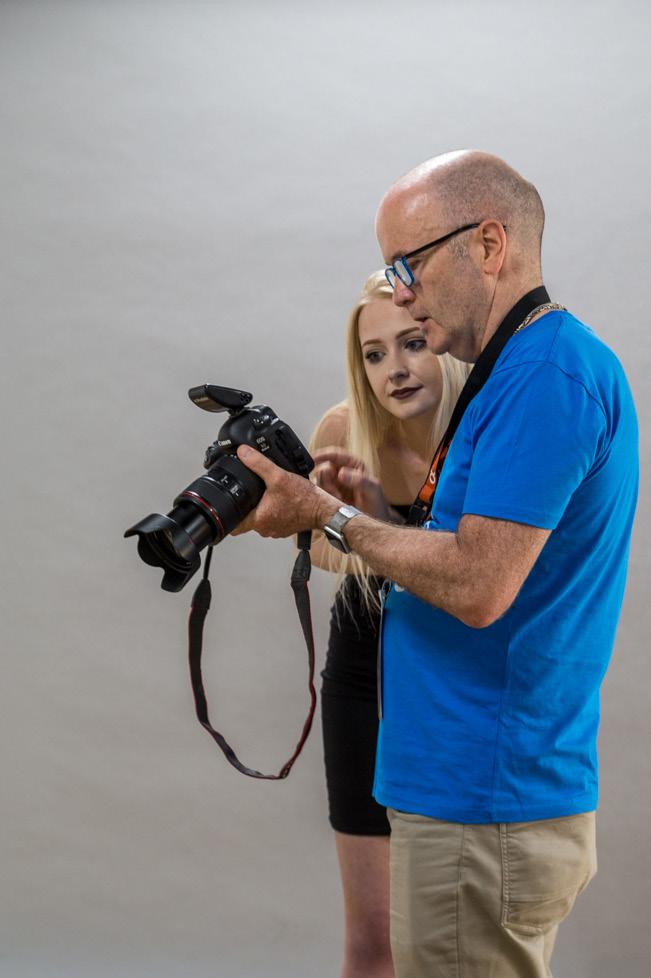
selecting the correct white balance
moving lights or modifiers to add/remove background shadows
changing background colours with coloured gels over lights, and
why photographers wear black (it reduces colour cast).
Based on feedback on the PSNZ Facebook page, everyone enjoyed the workshop and came away with some great tips and techniques to improve their portrait photography.
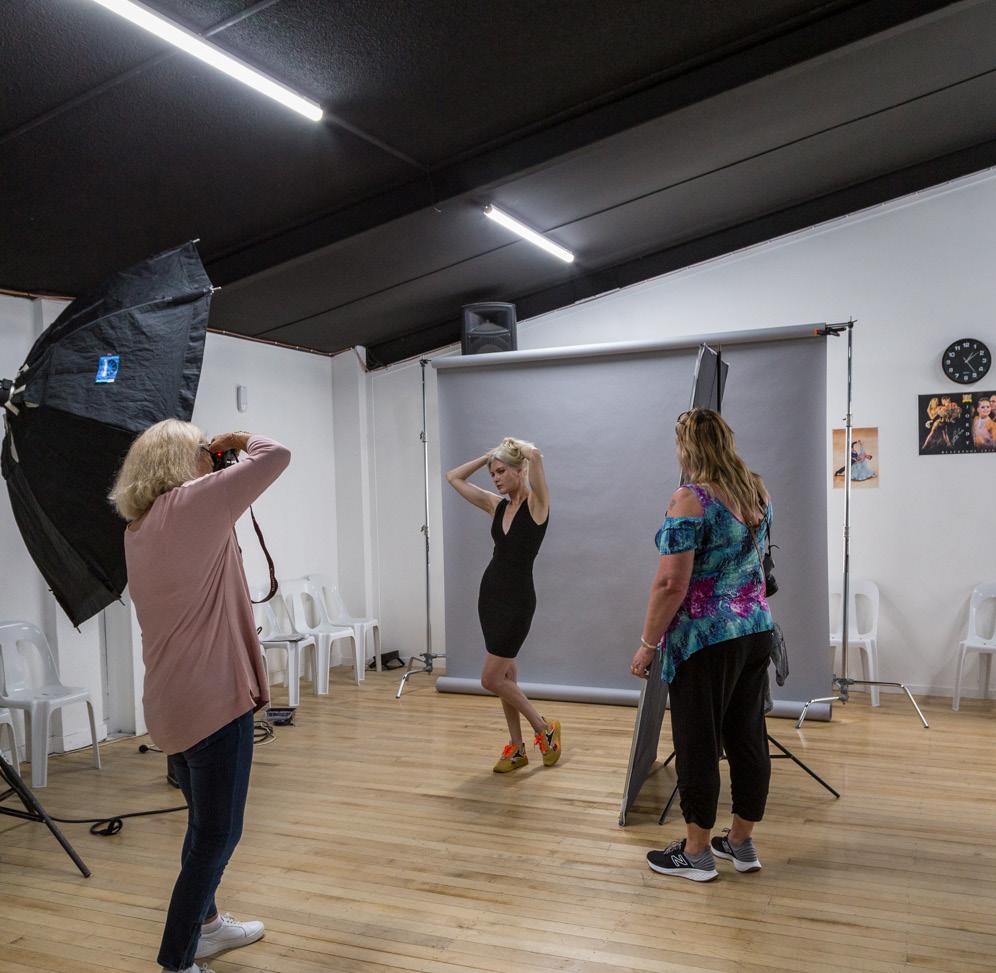
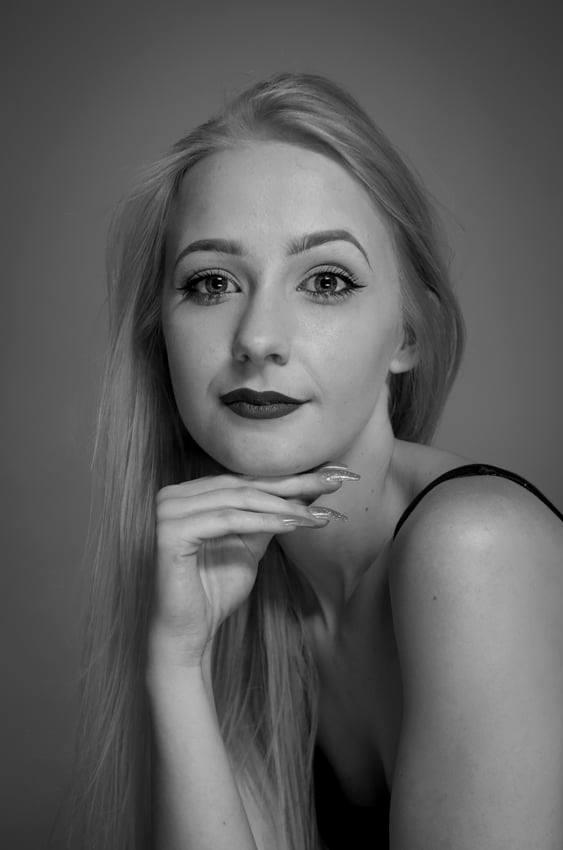
Image by Rachel Hume LPSNZ
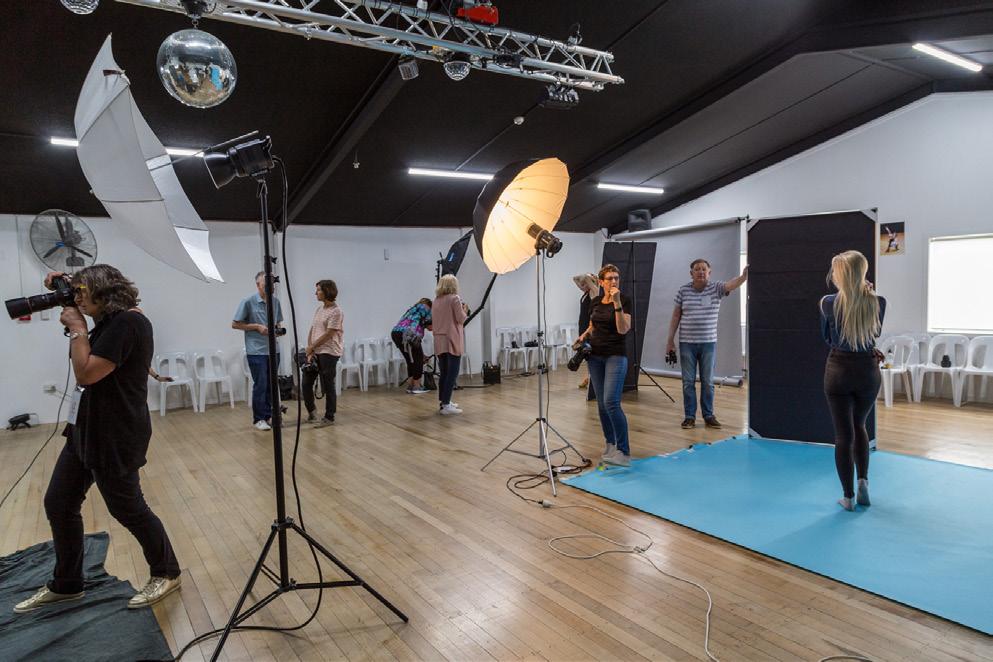
Comments from the Attendees
Leanne Silver
The Workshop Series portrait session with Aaron Key was postponed twice due to COVID-19 so it was wonderful to finally make the trip down to Hamilton for the day in early November.
As someone who is fairly new to photography, the opportunity to spend a day in a relaxed environment learning from an expert about how to use different lighting setups was of huge benefit. Aaron Key was very generous with his expertise, knowledge and equipment, and the hands-on experimentation de-mystified the whole process.
Having patient models and six different setups to explore the effects of various lights and modifiers was invaluable and I went home inspired and keen to explore lighting options further. It was also lovely to meet and chat with other photographers over the course of the day.
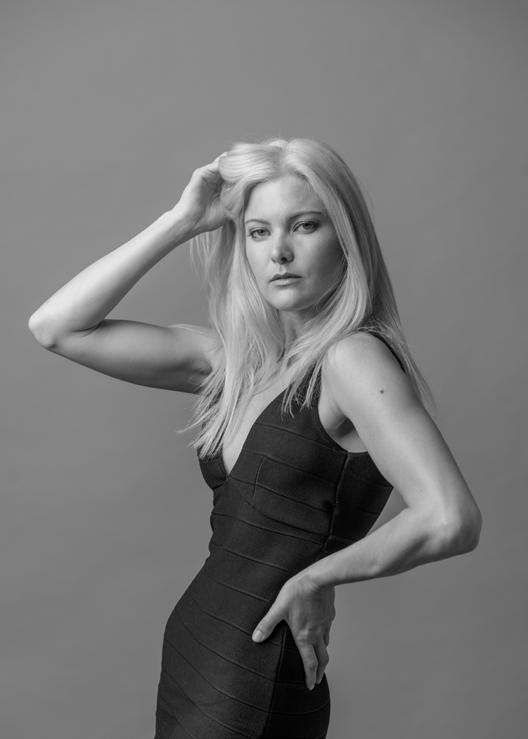
I’m very excited to see what the Workshop Series coordinators will have lined up for 2021. Thanks again PSNZ, SONY NZ and Aaron Key.
Judy Alley LPSNZ
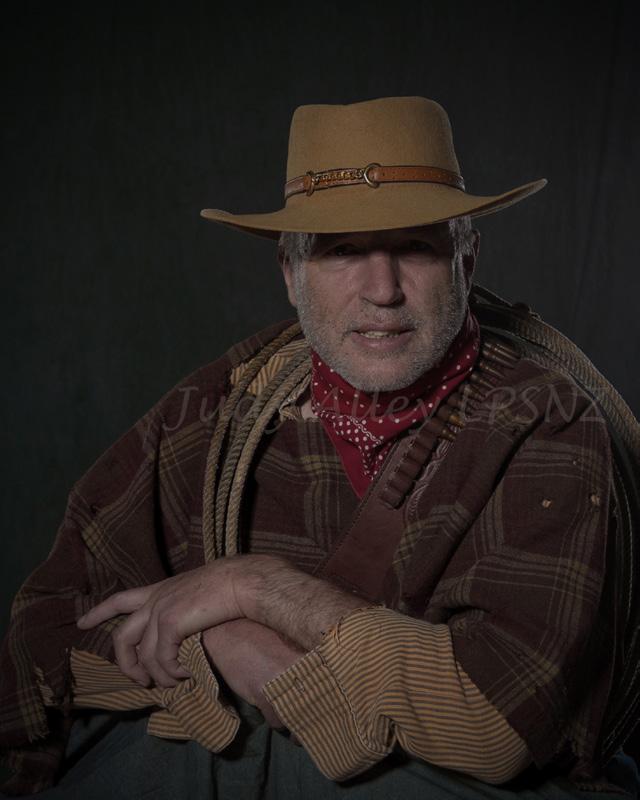
Rose by Leanne Silver
I liked that there were three different sets with different lighting set-ups and a model for each. It was a great day.
Hans by Judy Alley
Nature on Kapiti Island
By Paul Whitham LPSNZ Councillor for Publications
THE GOAL OF PSNZ is ‘helping photographers grow’. I suspect there was a certain element of wisdom in assigning the councillor who shot the least number of nature images to oversee Nature on Kapiti Island, the final event in the 2020 PSNZ Workshop Series. Having said that I was more than willing to go as I’ve driven past the island numerous times but never once ventured onto it.
In a year so affected by COVID-19 it was nice to be able to hold an event on the weekend when it was originally planned. It proved to be a very popular event and the 30 spaces were filled up very quickly, with people coming from all over the country.
The weekend started with a briefing session on the Friday night, in the chapel of the El Rancho camp, where Craig McKenzie ran through his tips on how to shoot nature. He is a firm believer in the use of tripods, the one piece of photographic equipment I had not bothered to include. Most of the other participants however must’ve already got the message. On Saturday morning we were up early to catch the boat which was leaving at 7.30am from the beach at Paraparaumu. Everybody was eager to go, judging by the fact that they were all on time. After going through a bag check and receiving our packed lunch, we headed up the gangplank onto the boat that was sitting on its trailer, in the car park. It certainly was an unusual way to start a sea journey.
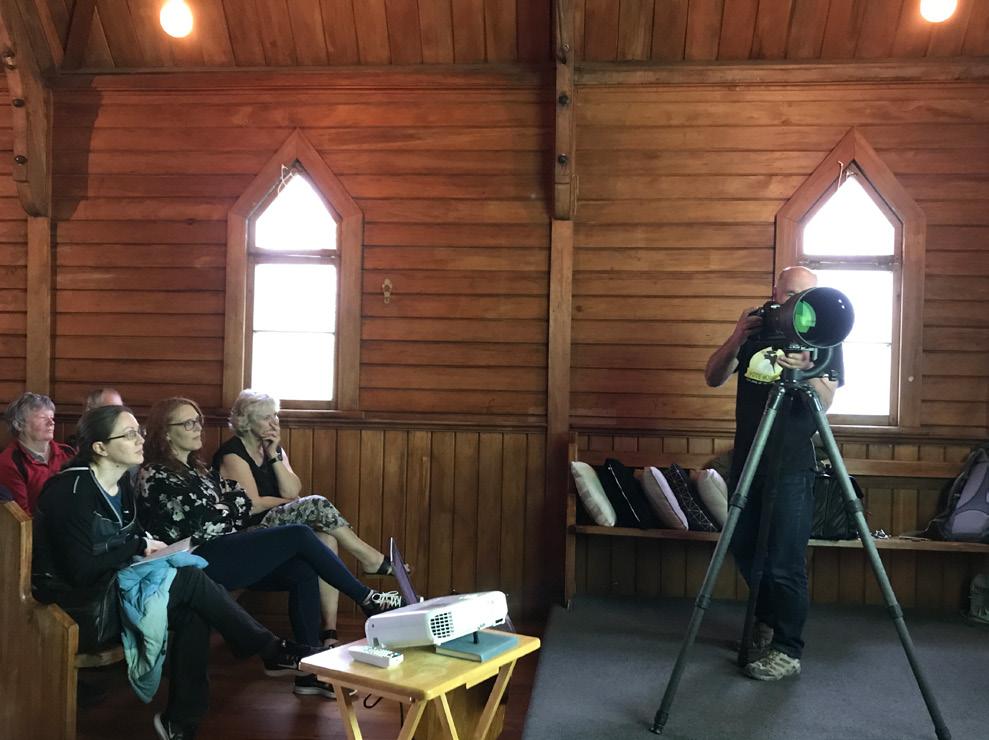

Images by Neil Gordon APSNZ
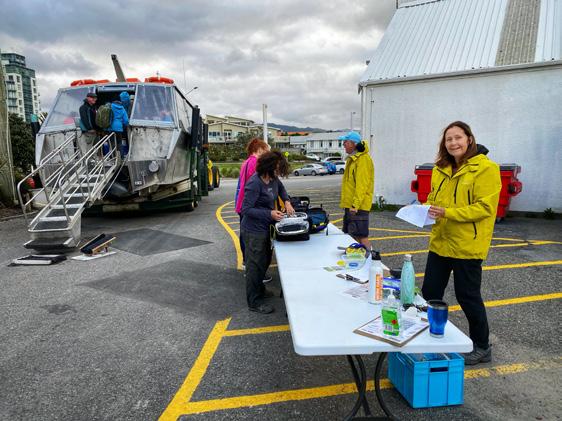
The day had started cloudy and the sea was quite choppy as we headed across the 5km from the beach to the island. When we disembarked the guide took us to the shelter that would be our base for the day and proceeded to tell us about the island’s history and the birds that we could expect to see.
Craig demonstrates long lens techinue - image by Paul Whitham
Image by Neil Gordon

We had been led to believe that we would be on the island until 3.00pm so when he said that we needed to catch the boat at 1.15pm it was something of a shock. I’m not sure how we ended up with this difference in timings but by 12.30 it appeared that most people had started to flag and we were happy for the boat trip back. The day had also become cloudless so the light was no longer the best for photography.
Kapiti is quite a difficult island to photograph on. The regenerating bush is dense so, while you could hear the birds, getting to photograph them was something else. The island is also quite steep. The guide had told us that there was a hihi (stitchbird) and tieke (saddleback) feeding station about 30 minutes up the track to the summit. Quite a number of us headed up to it but not all made it to the actual location. The guide had warned us that the weka and kaka would both try to steal food from us and that it was quite possible that kaka would land on us.
Sure enough, when we got to the station we were greeted by a pair of weka, and a very friendly kaka arrived shortly after. He (or she) landed on several people and tried to get into their backpacks. For a reasonably large bird it was remarkable how little they weighed.
As it turned out photos of the kaka were the only reasonable images I took in the entire day, which I guess was not surprising as it was the only bird on the island that was willing to pose for the camera.
One of the rarest birds on the island is the takahe. Fortunately they were feeding just off the track when we arrived, so a number of people did manage to get good images of them.
By 1.00pm the majority of people had assembled back on the landing beach but there were other people there from later boats. When our boat arrived the guide and I tried to make certain that only members of our party got on. We were both doing a headcount but
The briefing - image by Paul Whitham
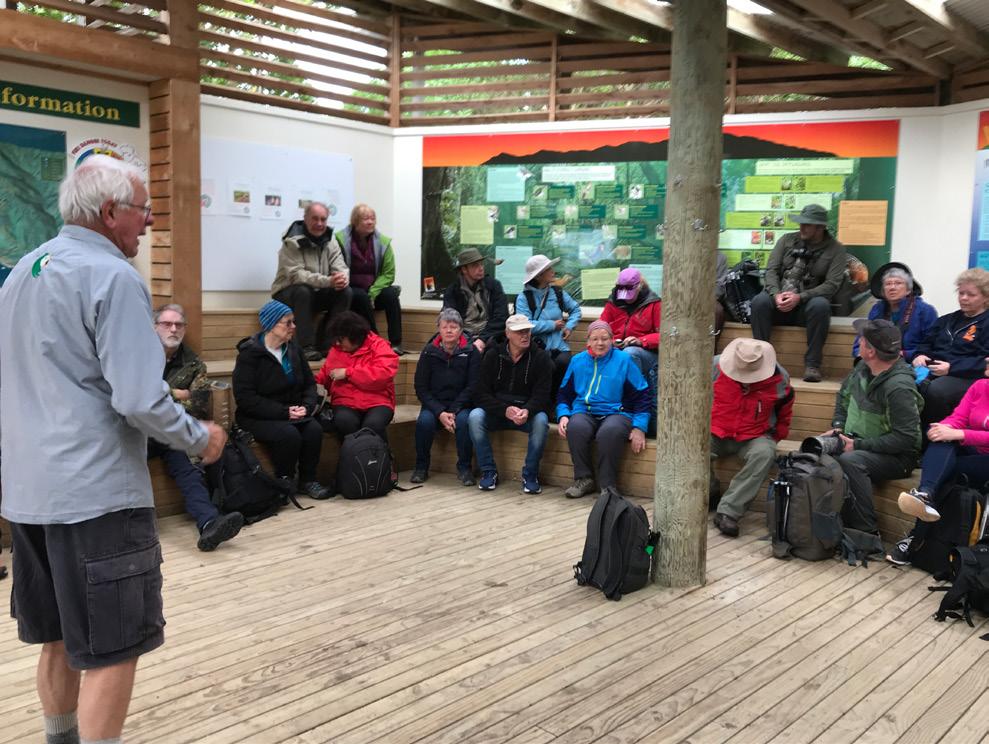
Image by Neil Gordon
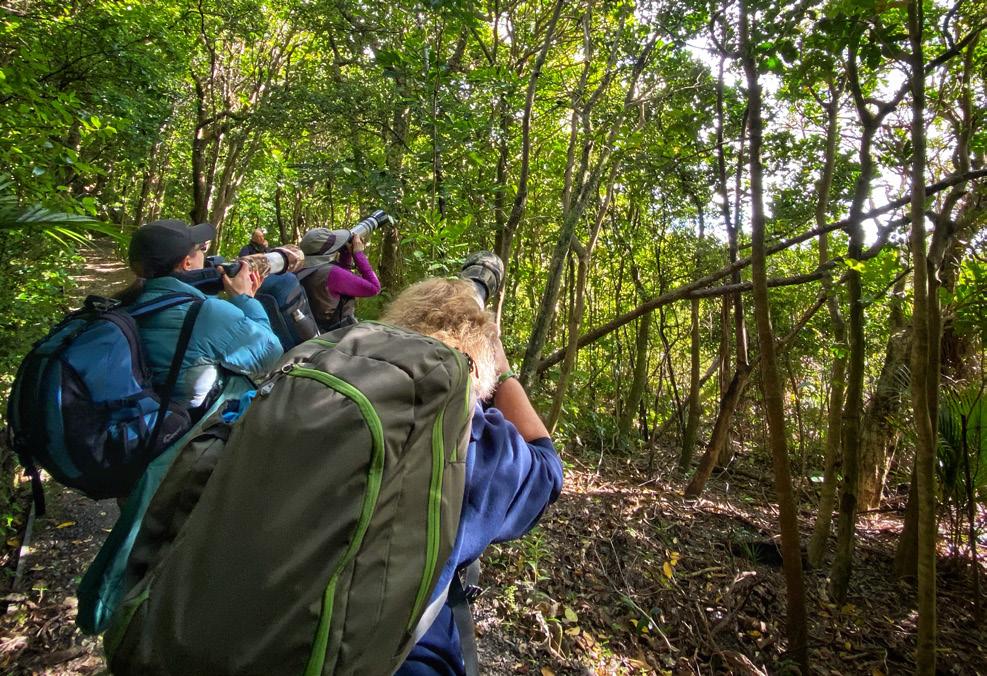
Image by Neil Gordon
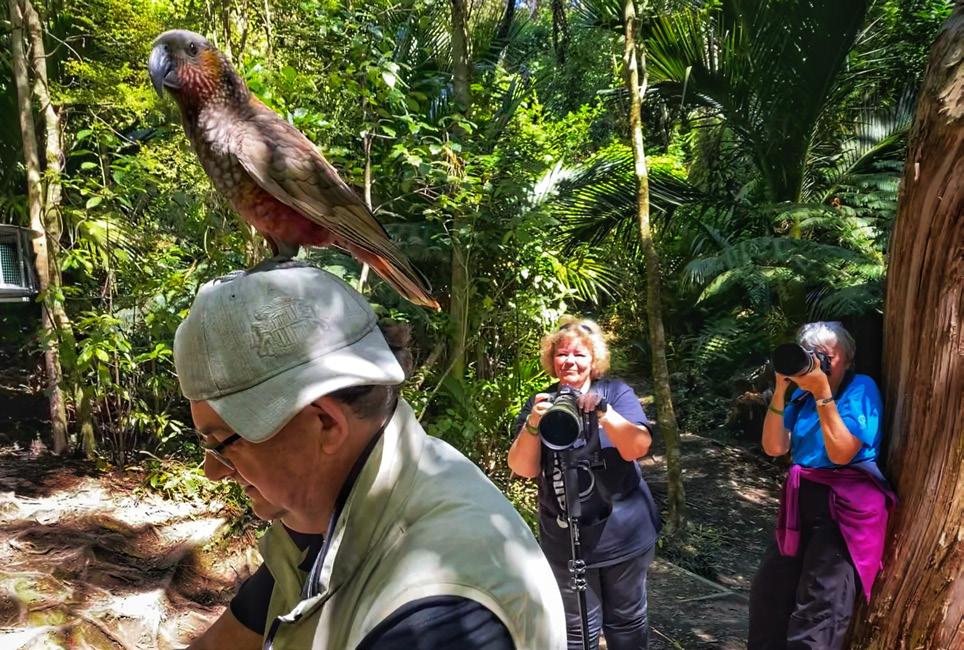

Photographers did not have to go far to find the birds. A welcome swallow nesting inside the shelter drew a lot of attendtion. Image by Paul Whitham
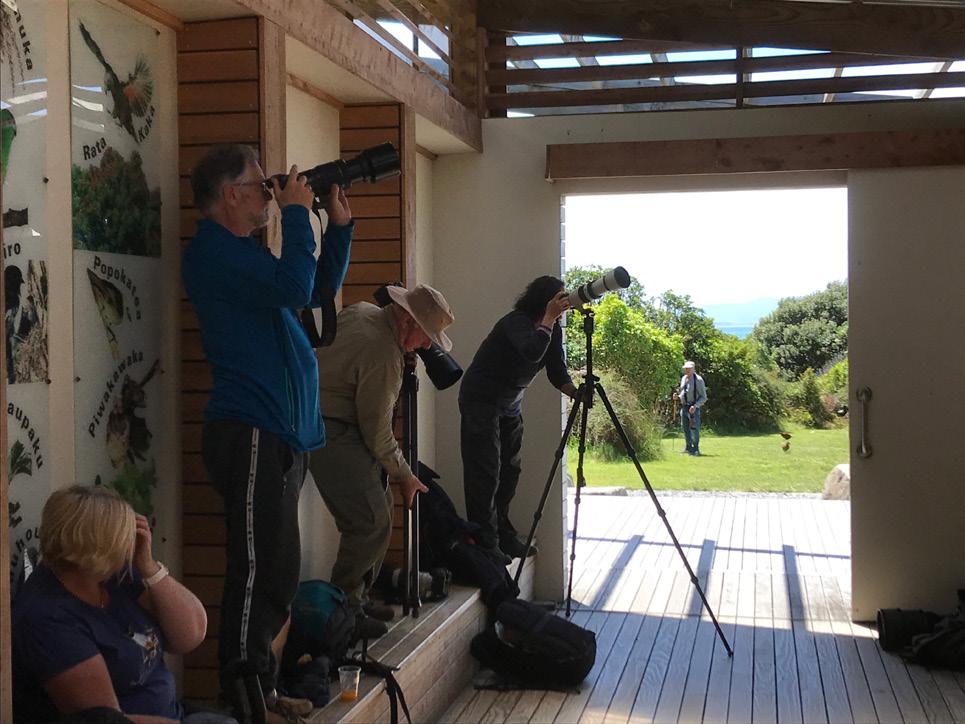
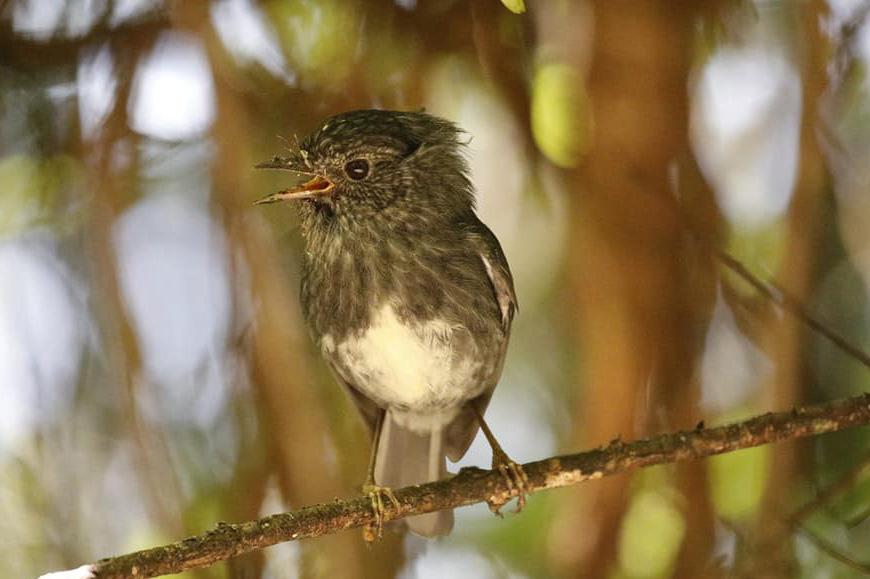
Photographers on the Kapiti bird workshop ‘walking the talk’ as per Craig’s recommendations. Image by Wayne Smith I lost count when one of the party lost a lens cap over the side of the gangplank and went out to retrieve it.
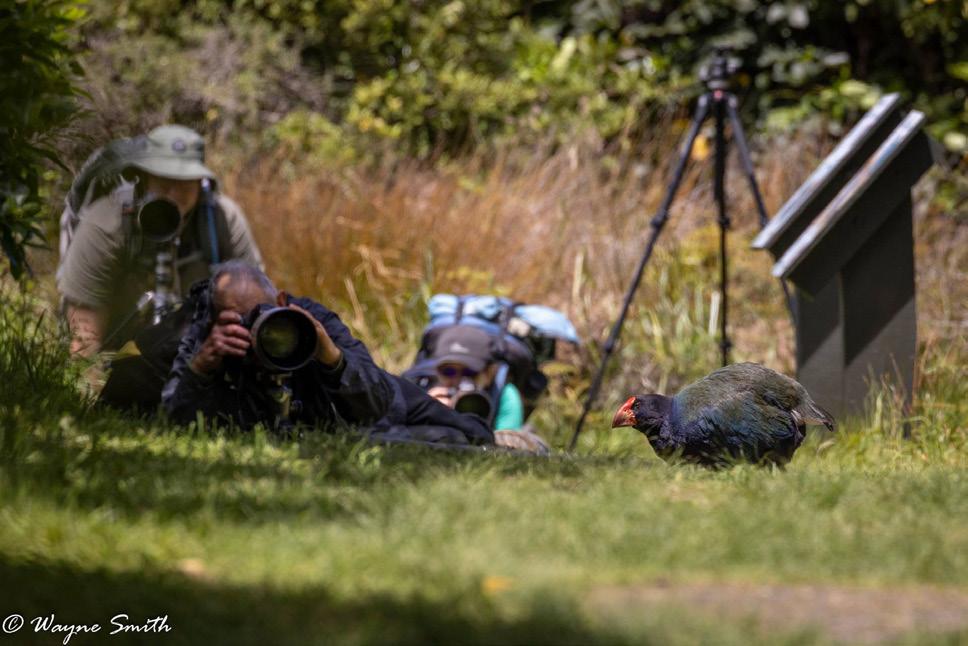
The guide assured me that he had counted 32 people, the number we were expecting. On that basis we didn’t bother with the headcount. It wasn’t until the boat actually pushed off that Julia Home APSNZ EFIAP/b AAPS GPSA PPSA realised that Karen MoffittMcLeod LPSNZ was not on board. We alerted the skipper and we tried to make contact with Karen. The boat had to circle a number of times until Karen eventually got to the right beach, but by then it had been agreed that she was going to be coming on the next boat.
The plan, when we got back from the island, was to head up to the Waikanae Estuary and photograph the birds there. Craig had done a ‘recce’ on the Friday afternoon and ascertained that there was plenty of birdlife there.
With the boat getting back much earlier we reached the estuary much earlier than planned. People headed off in small groups, in all directions, and then drifted away when they felt the need. By 4.00pm there were about 15 left and we headed to the local watering hole for social time, with a much smaller group staying for a meal afterwards.
The general opinion was that everyone had enjoyed the trip and were very positive about the efforts of PSNZ, particularly Councillor James Gibson APSNZ EFIAP, in putting the workshop series together.
Robin by Carolyn Elcock ANPSNZ EFIAP QPSA FAPS
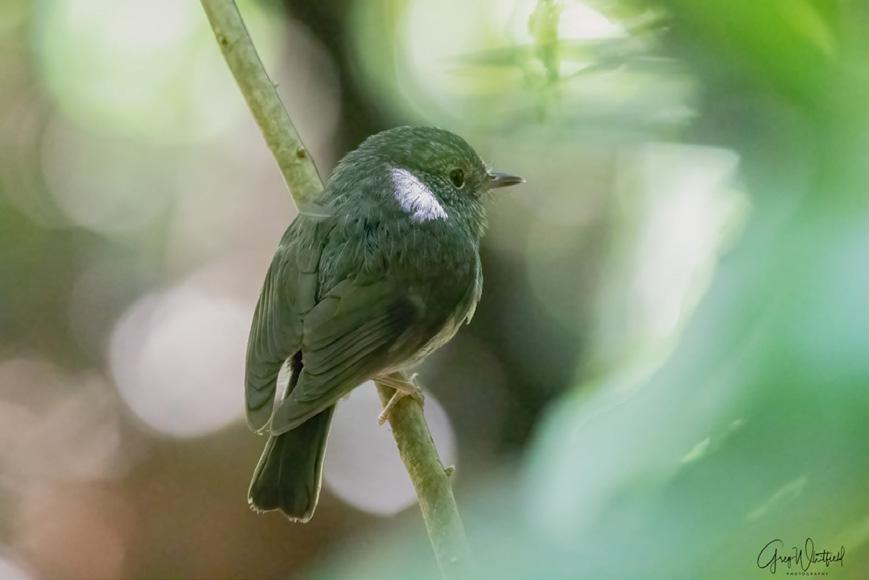
Weka by Terry Harkin

Comments from the Attendees
Terry Harkin
The workshop included a technical session on the Friday night where Chris ran through a number of subjects about taking successful bird photographs and the gear required etc. It provided some great learning and Chris was able to show examples in the presentation and answer all of our questions.
On Saturday morning at 7.00am, we all turned up at the Kapiti Island transfer depot to check our bags to ensure we were not taking any unintended pests across to the island, and picked up our packed lunches for the trip.
Upon arrival we were given a talk from the local DoC Ranger who gave us some great insight into the history of the island and what we could expect to see there.
Then we all set off to walk the various paths, hearing the constant noises of our native birds.
My highlight was arriving at the feeder station where there were a couple of wekas checking us out, and then a kaka arrived and after looking at my bag on the table flew up onto my shoulders! He presented us all with a bunch of photo opportunities.
We left the island at 1.15pm and those that wanted to then went to the Waikanae Estuary with Craig to get some more bird shots.
Overall it was a fantastic workshop. Craig is so generous with sharing his knowledge and experience, and it’s always fantastic meeting fellow PSNZ members from throughout New Zealand.
Painting with your Camera or Intentional Camera Movement
By Moira Blincoe LPSNZ
WHAT IS COMMONLY referred to as ‘blurry sh*t’ took on a whole new meaning when I was fortunate enough to sit in on Judy Stokes’ “Painting with your Camera” workshop in October.
Despite the delay from lockdown, everything was on Judy’s side when it came time to host her workshop, set in her lovely studio at Muriwai. With the garden, bush, beach and gannet birds on her doorstep, the delegates didn’t have to wander very far to put into practice the theory that Judy shared in the morning.
Her passion for her craft is infectious. The morning sessions covered the various styles of ICM and how to achieve the look or capture the feelings at the time of creating the image. ICM is all about suggestions of movement depending on what one wants to achieve – which is all subjective and personal – you can try for abstract, impressionism and expressionism – in colours, form and subject. By the time we were let loose in the bush, people couldn’t wait to start ‘painting’.
While it might look an ‘easy’ technique to use because really, the camera settings are quite straightforward, it is actually harder than you think!
With a slow shutter speed and slight or gentle movement of the camera, many a time when I thought I had captured the leaves of a tree as how I ‘visualised’ the image to be, when I checked the back of my camera, all I saw were silver streaks across a blur of green! There was definitely no ‘chimping’ on my part.
After an enjoyable lunch, Judy shared her post
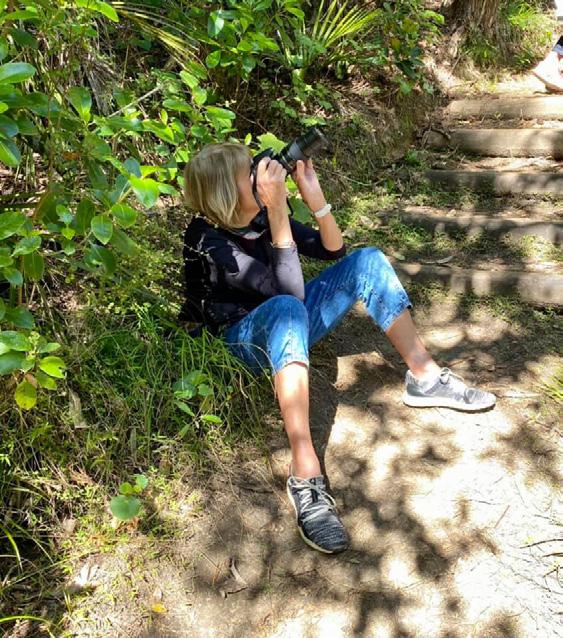

All images on page by Moira Blincoe

processing techniques, which were again, straight forward, minimal, but produced great results – when you know the ‘look’ you want to achieve.
When we went to the beach to practise with more moving objects – people, dogs, surf, kite surfers and birds – I noticed a heightened enthusiasm and energy from everyone, mainly because they could see they were achieving the results of the classroom theory.
Suddenly there was more abstract, the ability to express ourselves a little more because of the variation in colours in front of us: black sand; blue and white waters; grey rock: white, yellow, black and red of the birds. There was definitely lots of ‘chimping’ at that stage.
Judy’s was one of the final workshop in the 2020 workshops series. It was fantastic to see our members soaking up every piece of knowledge Judy shared. A true artist, Judy is as passionate about sharing and teaching her craft as she is creating her own masterpieces.
Since the workshop, I have practised ICM on many occasions and am getting ‘more delighted’ with some of my results. There are still a lot of deletes though!
As with everyone who has attended a workshop and a love of learning, I’m very much looking forward to getting another genre under my belt in 2021.
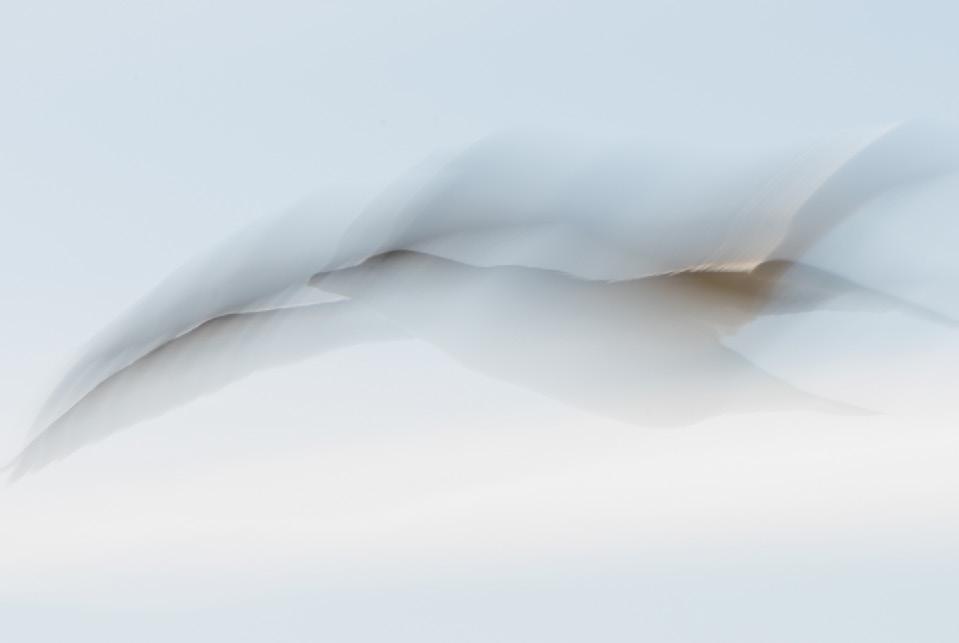
Gannets soaring at Muriwai beach by Moira Blincoe LPSNZ
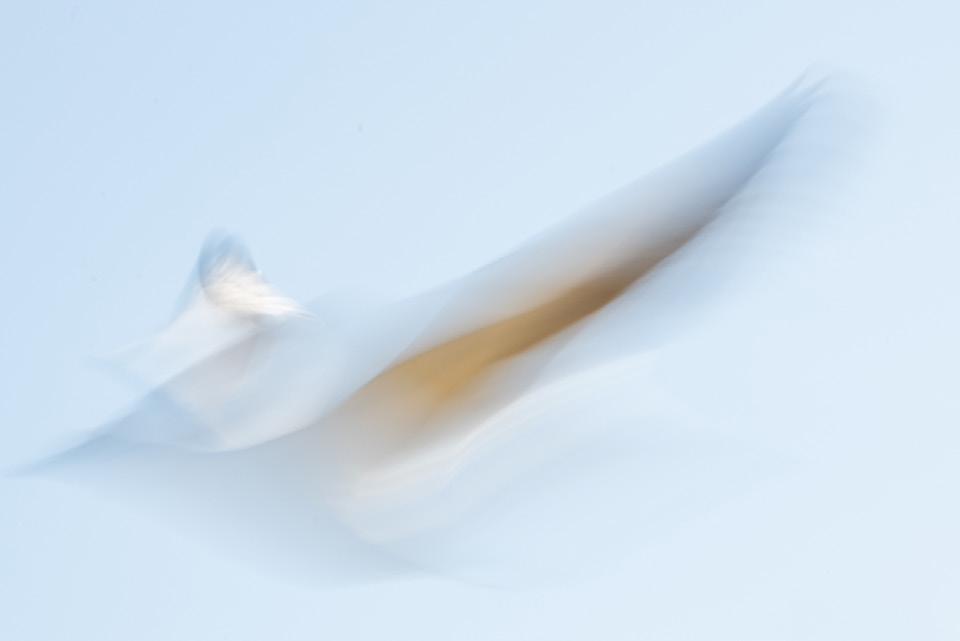
Interclub competitions are now open for entry.
Image by Anne Riddle

Image by Jude Carter
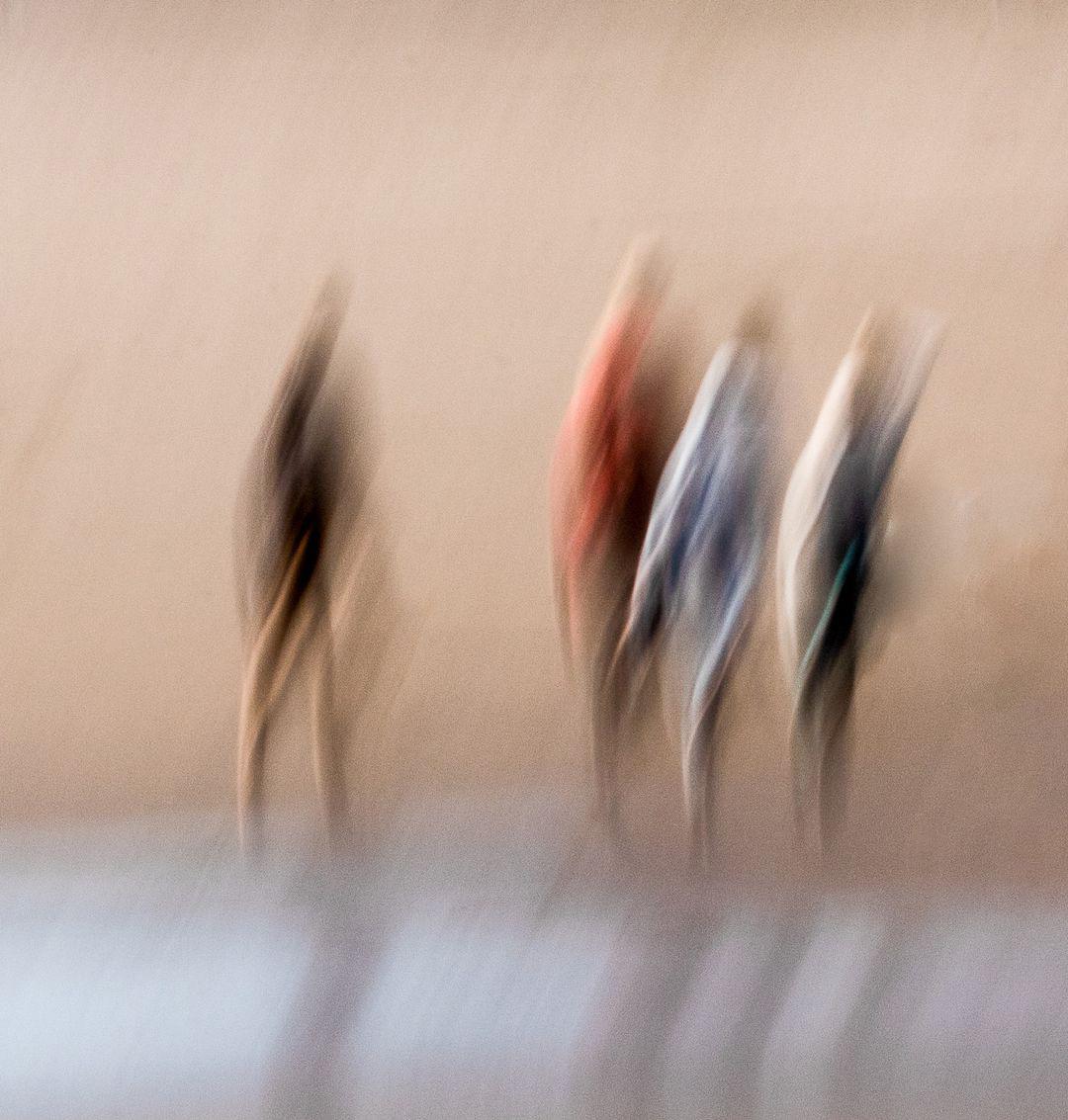
Image by Sarah Caldwell APSNZ
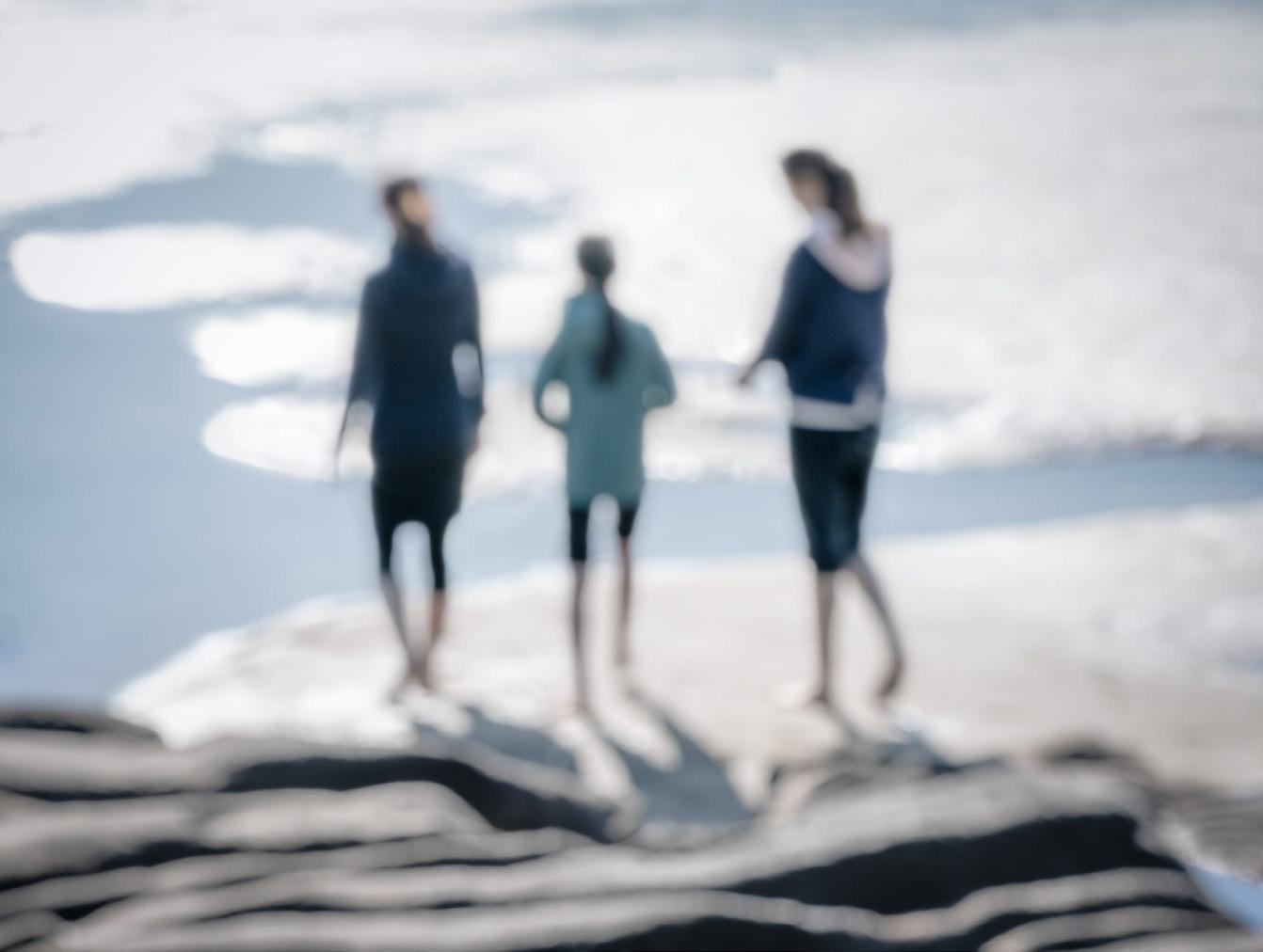
Image by Colleen Sayer
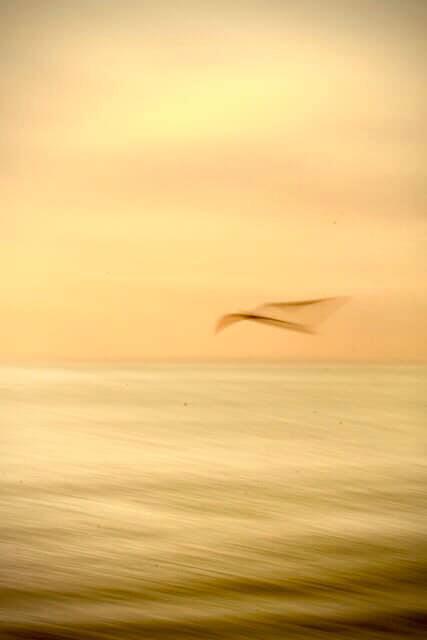
Up Close and Personal
By Karen Lawton
ONE OF THE PSNZ workshops to go ahead after the COVID-19 lockdown period was the Macro Workshop held in Nelson in October. Twenty attendees were treated to a very professional and intriguing morning presentation by Tauranga-based Matt Leamy. Drawing on images taken in his day job, Matt illustrated the magical world of macro imagery.
Matt works in the Plant Health and Environment laboratory (PHEL), Biosecurity New Zealand which is part of the Ministry for Primary Industries. PHEL’s role is to provide the science support for biosecurity and advise government. His role is creating visual media, informational and promotional videos, training videos, general photographic work, some scientific imaging and and getting involved in communications work.
He took the mystery out of focus-stacking images and challenged us to think outside the square in terms of subject matter, presentation and processing. We learnt about magnification, working distances, exquisite framing, and dealing with the unique vagaries of depth of field as it pertains to the macro world.
The afternoon session saw attendees getting up close and personal with flowers, bumble bees, leaves and all manner of indoor macro subjects for an hour or so, followed by a great processing session. Several people tried out focus-stacking – Zerene Stacker (http://zerenesystems.com/cms/stacker) has a free one-month trial version. Anyone who was interested but didn’t already have focusstacking software was able to download and trial this too.
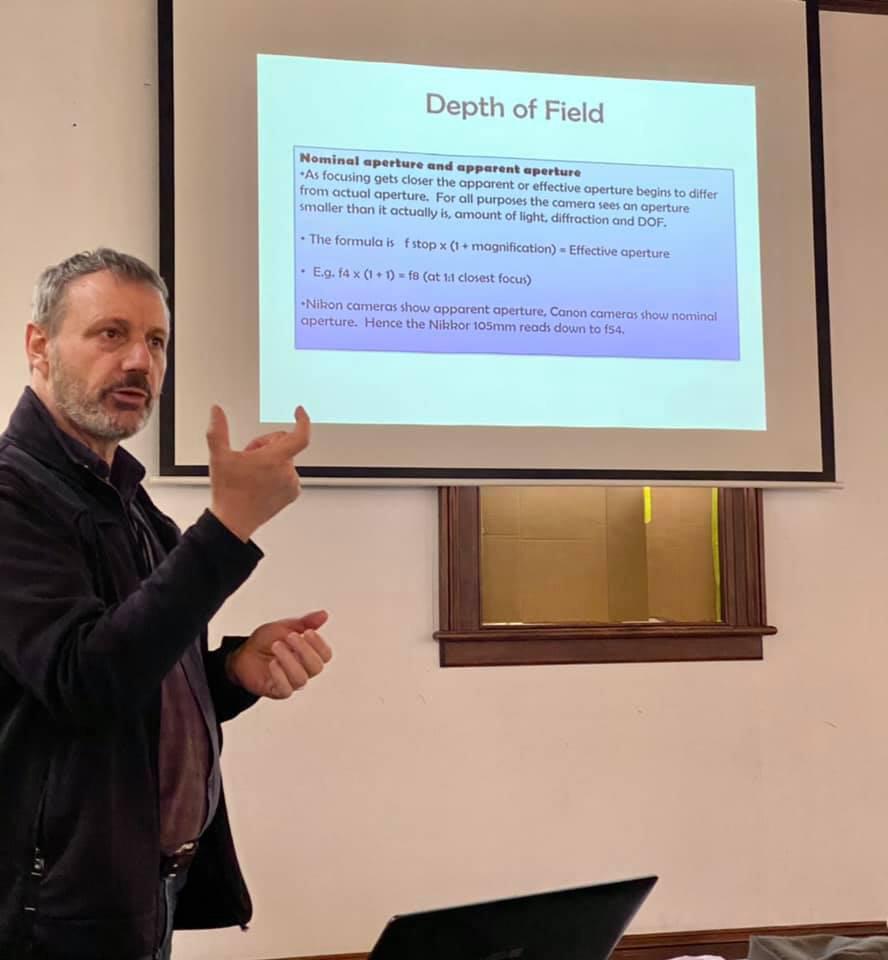
All images by Moira Blincoe LPSNZ

Trade partner Olympus very generously supplied a wide range of loan gear for the workshop session, giving participants a great opportunity to trial new camera bodies and specialist macro lenses.

Macro photography really is one of the most rewarding genres of photography – the way it allows expression of a minute world is often magical. The knowledge shared during this workshop resulted in a very rewarding and highly recommended experience.
